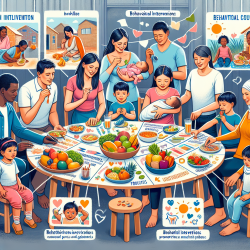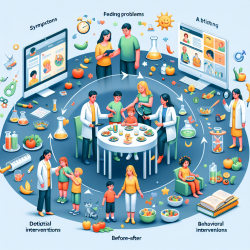Introduction
In the realm of maternal, infant, and young child nutrition, the role of family members, particularly fathers and grandmothers, is often overlooked. However, a recent systematic scoping review titled "Engaging family members in maternal, infant and young child nutrition activities in low- and middle-income countries" sheds light on the transformative potential of involving family members in nutrition interventions. This blog explores the key findings of this review and how practitioners can leverage these insights to enhance their practice.
Key Findings from the Review
The review analyzed 87 articles from 63 studies, focusing on interventions that engaged family members in maternal and child nutrition in low- and middle-income countries. Here are some of the significant findings:
- Interventions were both facility and community-based, employing diverse strategies such as interpersonal communication, community mobilization, mass media, and mHealth.
- Most interventions targeted multiple maternal and child nutrition practices, including breastfeeding and complementary feeding.
- Family members were engaged through both individual and group-based approaches, reaching mothers and family members together or separately.
- Few interventions addressed underlying gender norms, decision-making, and family dynamics, highlighting an area for further development.
Implications for Practitioners
Practitioners in the field of nutrition and maternal health can draw several lessons from this review:
- Holistic Family Engagement: Practitioners should consider involving fathers, grandmothers, and other family members in nutrition interventions. This inclusive approach can foster a supportive environment for mothers, enhancing the effectiveness of nutrition programs.
- Community-Based Approaches: Leveraging community resources and networks can amplify the reach and impact of nutrition interventions. Practitioners should explore partnerships with local organizations and community leaders to facilitate engagement.
- Addressing Gender Norms: To create lasting change, interventions should address gender norms and family dynamics. Practitioners can incorporate gender-sensitive strategies to empower women and encourage equitable decision-making within families.
- Utilizing Technology: mHealth and mass media can be powerful tools for reaching a broader audience. Practitioners should explore innovative ways to integrate technology into their programs, ensuring accessibility and engagement.
Encouraging Further Research
While the review provides valuable insights, it also highlights gaps in the current literature. Practitioners are encouraged to engage in further research to explore:
- The impact of addressing gender norms and family dynamics on nutrition outcomes.
- The effectiveness of different communication strategies in engaging family members.
- The role of cultural context in shaping family engagement and nutrition practices.
Conclusion
Engaging family members in maternal and child nutrition interventions holds immense potential for improving nutrition outcomes in low- and middle-income countries. By adopting a holistic, community-based approach and addressing underlying gender norms, practitioners can enhance the effectiveness of their programs. For those interested in delving deeper into this topic, the original research paper provides a comprehensive overview of the interventions and their outcomes.
To read the original research paper, please follow this link: Engaging family members in maternal, infant and young child nutrition activities in low- and middle-income countries: A systematic scoping review.










